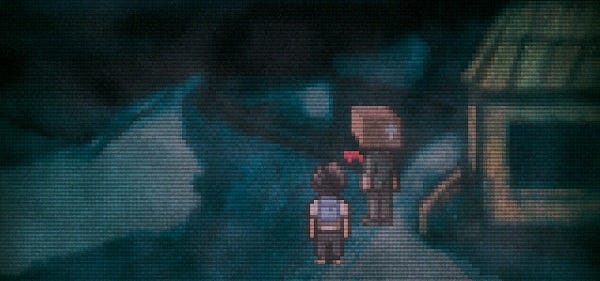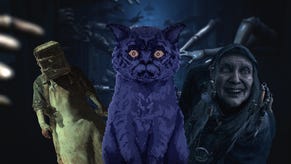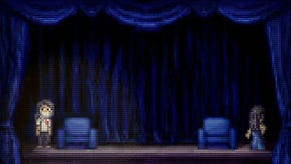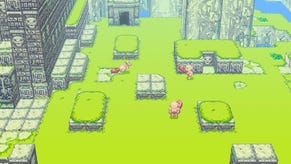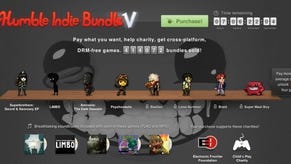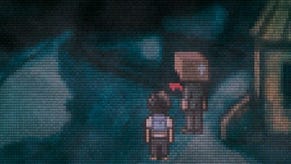Wot I Think: Lone Survivor
"Monsters? They look like monsters to you?"
Lone Survivor is a superb one-man horror show that has a lovely cat sub-plot, the best soundtrack I’ve heard so far this year and an entirely unexpected sense of humour. It’s not the kind of scary that will frighten the toupée off you, but it’s the kind that might just make you think, reflect and then shudder a little. It might even make you all misty-eyed and forlorn. Here’s wot I think.
There were all manner of splendid games released in 2011 but, from my perspective, the year lacked one thing. I found myself resting more easily than is normal, dreaming of dragons and dungeons in elegant fantasy worlds, of the moon and the sadness it contains. Where are my nightmares, I pondered many a morning, where are the faceless abominations that gibber and reach, long-fingered, into the softness of the cerebrum to dredge up the bone-white grinning terror that is the memory of mortality, obscuring and confusing thoughts of a future with the shadow puppets of inevitable demise?
In short, where in damnation was 2011’s standout horror game? Though it was released in 2010, Amnesia, despite what I felt was a limp denouement, contained enough distress and anxiety to keep me going for much of last year, but since then I’ve been sleeping with the lights off, merrily fetching things from the cellar and nonchalantly exploring the abandoned asylum at the edge of Foolhardy Forest, a spring in my step and a song on my lips. Or at least, I was doing all those things.
If something hadn’t come along to knock some sense back into me, ensuring that I once again feared the dark, my own fractured mind and the monstrous nature of man, I might have ended up getting myself into real trouble, so a whisper of thanks to Lone Survivor. I'm pleased to say that the year now has enough horror to tide us through ‘til the end of summer and it’s thoughtful horror of the sort it’s rare to see in any medium.
The horror aside, Lone Survivor is probably best described as a side-scrolling adventure game, with items to collect, characters to talk to and locations to explore. Control is simple: move left and right, push up to hide in shadows where they exist, and press ‘x’ to interact with or look at objects. There’s a great deal of detail in the world, something that really hit home when I examined some shoes only for the character to say he didn’t want to wear them because they make sneaking harder. It was only then that I noticed his bare feet, something the sound of his soles on carpet should have clued me in on long before.
Navigating through the lovingly crafted environments can be a little frustrating at first, or at least it can if your spatial awareness is as poor as mine. I struggled slightly to locate myself in a ‘3d’ space from a 2d perspective, walking into and out of the screen to enter rooms or turn down corridors. It all made sense after a while, although in the middle section, when the surroundings become more clotted and tumorous it’s easy to become lost.
Thankfully, despite the presence of hunting horrors, Lone Survivor rarely wants you to run or be quick on your toes. It’s more contemplative in its pace, although when the time for action arrives, you’ll know about it. There is combat, although it’s a small part of the game and simple enough to be functional if nothing more. This is a game in which you’ll spend more time cooking than killing, unless you’re particularly bloodthirsty, and if you are the death-dealing sort, the game will make a note of that when it decides how things pan out for you.
Fittingly, Jasper Byrne’s game has been released (today!) in the same week that Silent Hill supremo Akira Yamaoka has spoken about the importance of music and audio design when attempting to provoke emotions in an audience. Byrne previously made Soundless Mountain II, a demake of Silent Hill 2, and his new game picks up many of the themes and even settings of Yamaoka’s series, particularly that much cherished second entry.
The more important comparison lies in the sounds of the game though. Byrne has a strong background in the music world and it’s evident throughout Lone Survivor. After an hour of hiding from twitching and skinless monstrosities in an apartment building that seems to be devouring and digesting itself, I came across the first moment that elevates the game from creepy, well-executed survival horror exercise and presents something more fascinating by far.
How to explain it without spoiling it? The music is the way. Melancholy and insistent piano have been the nameless survivor’s only companions for the game’s first act, as he searches for food and finds cryptic messages warning him that he’ll have to kill to live, and that the physical world has become more malleable than he perhaps might remember.
Hissing radio static and industrial horror-scores clank and whine whenever there is danger, but upon reaching a certain room, the sound of an upright bass can be heard through the walls. A jazzy bluesy tune, muffled and indistinct at first, is playing inside that apartment. It’s different, it’s incongruous, it’s the first of many giant question marks about perception and reality, and it’s also the cue for a tonal shift that lingers and toys with both player and protagonist throughout the remainder of the game, beginning inside that room.
Far from being all rust, blood and bile, Lone Survivor has its share of humour and the ambiguity of the scenario and confused narrative leave plenty of room for interpretation. There were points when I thought I’d figured it all out and found the psychological aspect a little lacking, but then another line of dialogue would prompt a new train of thought, a dream encounter would suggest I was wrong.
There’s a wonderfully self-referential moment when the main character comments on the game he’s in, without fully realising the significance of his words. There are several lines he can come out with, one of which, “It’s just another zombie game”, drily accepts that some people won’t look beyond the surface.
There’s light, hope and love in the game, though not as a counterbalance to the death and disease but as a reflection of it. The distortion of joy, the fear of loss, the shortcuts to success, procurement and happiness, they’re all themes the game enjoys playing with. The latter, in particular, waves hello from within the pill mechanic. A mysterious somebody appears to be leaving a supply of pills in the bathroom everytime our little survivor sleeps. Once you realise what they’re for it’s hard not to fall back on them, despite the troubling visitations they cause.
In fact, I was tempted to overdose just to see more of those hallucinations because they contain the game’s most interesting characters, as well as informing the ending of the player’s story. Despite the survival mechanics, which require frequent returns to the apartment to rest (there are shortcuts to avoid excessive backtracking), there’s always a goal beyond ‘eat, sleep, live’, even if the former two functions can absorb a great deal of time. Although there is space for prolonged and freeform survival within its limits, the world isn’t large enough to simply exist in.
Food and drink have had a great deal of attention lavished on them, with the correct containers needed for cooking and brewing, as well as a supply of gas and water. I didn’t even figure out how to collect water on my first playthrough meaning I had to go without my beloved coffee; if that were to happen in real life, I expect the world would rapidly become as disjointed and nightmarish as is depicted here. As it is, collecting the resources to heat a can of beans and then sharing in the joy of eating something other than squidsticks and cold scraps actually made me smile. It's a world where every pleasure and hope is amplified.
The strongest praise I can supply is that this is a game clearly made by a man who understands why people still hope for a return to the glory of Silent Hill 2. It’s a game made by someone who appreciates that the best way to get under someone’s skin is to make them think about that skin, not just the way that it peels off when a knife is applied, but the way that if feels to touch, the way that it covers our skulls and helps us to express ourselves, and the way that it wrinkles and ages.
I’ve seen two endings and as I write that I realise that ‘ending’ may be the wrong word. It’s the end of the game, sure, but they don’t feel like conclusions. They are reflections again, something the game plays with throughout its duration. For those hours (my first playthrough was around eight, nearly twice as long as my second) there are plenty of familiar psychological horror questions buzzing around like flies on a carcass: who is this survivor? Why is he living in an apartment that isn’t his? How much is madness, how much is monstrous? Why does that man have a box on his head?
Lone Survivor doesn’t answer all of those questions. Sometimes it provides several answers to the same question and leaves interpretation to the player, which did occasionally leave me wanting something more direct, although more often than not its appropriate to the overall sense of unreality. Maybe it’s a game about loneliness, maybe it’s about companionship, but it’s almost certainly about people, and their personal needs, desires and fears. On top of that, it's about games and interaction, about being watched and controlled.
I hope it’s not the only great horror game of the year but as far as I’m aware it’s the first; beautifully constructed, thought-provoking and, despite the many nods to Silent Hill, pleasingly individual in its pacing, plotting and mood. If you want to see more, here's a launch trailer. I'd be tempted to skip it if you're already planning to buy the game because seeing some of these scenes for the first time while playing may well give them more power, but the choice is yours. If you're not sure what to think yet, take a look or perhaps try the demo, details of which lie below.
Lone Survivor is available now direct from Superflat games on Mac/Windows for $10/£6.50, DRM-free. There is an online demo available on Kongregate.
